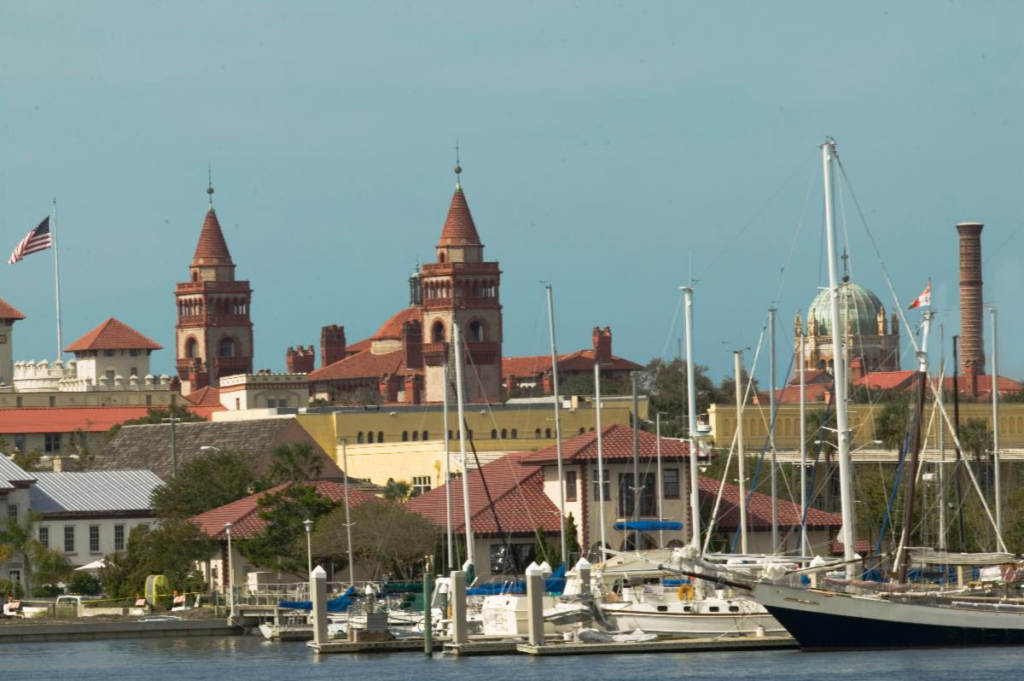St. Augustine, Ponte Vedra and The Beaches prioritize historical, architectural and natural sustainability
Residents and visitors alike are charmed by the historic sites and natural beauty of Florida’s Historic Coast. Cresting the Bridge of Lions, you’re more likely to feel like you’re descending into a Spanish village than a coastal town in Florida. This is thanks to St. Augustine and St. Johns County’s incredible dedication to sustainability and preservation.

Much of St. Augustine was originally built by new residents hailing from Spain, providing the city with a European look. The core of downtown holds many of the earliest buildings that are still in existence. The oldest is the González-Alvarez House, also appropriately named The Oldest House. It was built in 1723 and is a testament to the dedication of St. Augustine’s protectors. Many sites, including the González-Alvarez House, are listed on the National Register of Historic Places. The last count puts St. Augustine’s total at 46, with seven distinct neighborhoods under consideration. The St. Augustine Historic District is a Historic Landmark itself. To be considered for the registry, the property must meet certain criteria – how old it is, whether its integrity has been preserved and whether it is significant. Being listed on the register offers these properties certain protections, access to funding and grants for preservation and ensures any repairs or upgrades are sympathetic to the place’s original design and intent.
Keeping Florida’s Historic Coast historic is a big job. Through St. Augustine’s Historic Architectural Review Board (HARB) was created to manage the city’s historic integrity,. Using an extensive library of historic plans and materials as reference, such as original paint pigments from the Spanish colonial period, a board of specialists reviews construction and renovation applications to ensure that the historic integrity of the city’s most precious properties is preserved. While many properties perform upgrades to provide the most modern amenities, property owners ensure that the original buildings are never compromised. St. Augustine is one of the few American cities to employ a full-time archaeologist. Not only do they research, investigate, and evaluate potential construction sites, but they also preserve and maintain a large collection of artifacts uncovered throughout the city.
Even older but just as precious are area’s natural resources. These lands have been the site of numerous historic moments, and their preservation is just as important. The natural environment of the area boasts over 40 miles of pristine beaches, tens of thousands of acres of maritime hammocks, inland waterways, marshes, oyster beds, and more.
There are many local efforts to protect the natural habitat. Both the city of St. Augustine and St. Johns County have banned balloon and lantern releases, both posing a significant danger to coastal marine wildlife. St. Johns was the first county in Florida to do so. An incredibly active group of volunteers, supported by the county and permitted by the Florida Wildlife Commission, patrol the beaches to locate and mark sea turtles’ nests for protection.
Both the State and National Parks Systems actively promote responsible environmental impact and sustainability practices to protect their historic buildings, like the Castillo de San Marco National Monument, and seashores, like Anastasia State Park. The Guana Tolomato Matanzas National Estuarine Research Reserve (GTM Research Reserve) works with the National Oceanic and Atmospheric Association (NOAA) and the Florida Department of Environmental Protection (FDEP) to provide stewardship, facilitate research, and educate the public.

Visitors are eager to learn about this spectacular environment that locals have grown up appreciating and protecting. Eco-tourism allows travelers to experience the natural habitat with tour operators that approach tourism ethically and sustainably. Outfits like St. Augustine Sailing, Florida Water Tours, and GeoTrippin Adventure Company offer education-based tours that explore the ecosystem and its wildlife thoughtfully and non-invasively.
Many local attractions and businesses are committed to instituting environmentally friendly and socially responsible practices. Eateries like the Ice Plant Bar & Restaurant, Harvest & Reel, The Floridian, and Catch 27 Restaurant pride themselves on using locally-grown produce and ethically sourced meats and seafood in their restaurants. The St. Augustine Distillery, which produces craft spirits like bourbon and gin, has prioritized sustainability since its inception eight years ago. Its home, a repurposed ice plant built in 1917, has been recognized by the Urban Land Institute of North Florida for preserving as many elements of the original building as possible.
Many lodgings on Florida’s Historic Coast, from major hoteliers like Sawgrass Marriott Golf Resort and Spa to locally-owned enclaves like Carriage Way Bed and Breakfast Inn, have earned the Florida DEP’s Green Lodging designation. The DEP has also awarded the St. Augustine Municipal Marina, St. Augustine Marine Center, St. Augustine Shipyard, and Camachee Cove Yacht Harbor with its Clean Marina Program, showing it goes above and beyond to protect the local marine ecology. The St. Augustine Amphitheatre has a landmark initiative known as Green Hands that reduces its impact through innovative processes, like utilizing a reusable cup deposit system.
Social responsibility is at the forefront of many local events, fundraisers, and corporate giving initiatives. Organizations like the St. Francis House, Marineland Right Whale Survey Project, and the Youth Crisis Center help protect the area’s most vulnerable populations. Preserving the natural environment and historic splendor of St. Augustine, Ponte Vedra and The Beaches is a job that visitors and residents alike take very seriously.
Plan a trip to Florida’s Historic Coast to experience the area’s unparalleled commitment to preservation and sustainability. Photos to accompany available on request.
Located midway between Daytona Beach and Jacksonville, Florida’s Historic Coast includes historic St. Augustine, the outstanding golf and seaside elegance of Ponte Vedra, the rural beauty of Hastings, Elkton, St. Johns, and 42 miles of pristine Atlantic beaches. Visitor Information Centers are located at 10 Castillo Drive, St. Augustine; 200 Solana Rd. Suite B, Ponte Vedra Beach; and at the St. Johns County Beach Pier Park, 350 A1A Beach Blvd., St. Augustine Beach. For advance travel information call 1-800-653-2489 or go to the Visitors and Convention Bureau websites at www.FloridasHistoricCoast.com or www.ViajaStAugustine.com.






